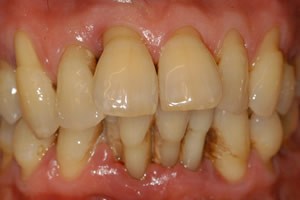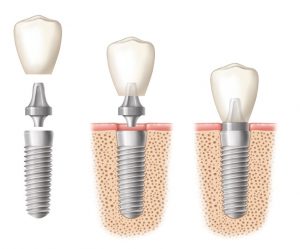Header logo
header top contact widget
Blog Archives
Recent Posts
Categories
Archives
- April 2024
- March 2024
- February 2024
- January 2024
- December 2023
- November 2023
- October 2023
- September 2023
- August 2023
- July 2023
- June 2023
- May 2023
- April 2023
- March 2023
- February 2023
- January 2023
- December 2022
- November 2022
- October 2022
- September 2022
- August 2022
- July 2022
- June 2022
- May 2022
- April 2022
- March 2022
- February 2022
- January 2022
- December 2021
- November 2021
- October 2021
- September 2021
- August 2021
- July 2021
- June 2021
- May 2021
- April 2021
- March 2021
- February 2021
- January 2021
- December 2020
- November 2020
- October 2020
- September 2020
- August 2020
- July 2020
- June 2020
- May 2020
- April 2020
- March 2020
- February 2020
- January 2020
- December 2019
- November 2019
- October 2019
- September 2019
- August 2019
- July 2019
- June 2019
- May 2019
- April 2019
- March 2019
- February 2019
- January 2019
- December 2018
- November 2018
- October 2018
- September 2018
- August 2018
- July 2018
- June 2018
- May 2018
- April 2018
- March 2018
- February 2018
- January 2018
- December 2017
- November 2017
- October 2017
- September 2017
- August 2017
- July 2017
- June 2017
- May 2017
- April 2017
- March 2017
- February 2017
- January 2017
- December 2016
- November 2016
- October 2016
- September 2016
- August 2016
- July 2016
- June 2016
- May 2016
- April 2016
- March 2016
- February 2016
- January 2016
- December 2015
- November 2015
- October 2015
- September 2015
- August 2015
- July 2015
- June 2015
- May 2015
- April 2015
- March 2015
- February 2015
- January 2015
- December 2014
- November 2014
- October 2014
- September 2014
- August 2014
- July 2014
- June 2014
- May 2014
- April 2014
- March 2014
- February 2014
- January 2014
- December 2013
- November 2013
- October 2013
- September 2013
- August 2013
- July 2013
- June 2013
- May 2013
- April 2013
- March 2013
- February 2013
- January 2013
- December 2012
- November 2012
- October 2012
- September 2012
- August 2012
- July 2012
- June 2012
Individualized Care For Unique Patient Needs
Posted on Jan 25, 2017 by William J. Claiborne, DDS MS
I once heard the term, “not everything fits into a box.” I agree. While this may be related to the phrase, “think outside the box,” it reminds me of how we approach patient care.
As a Periodontist, my specialty includes treating all levels of periodontal (gum) disease, reshaping gum tissues, and the diagnosis and placement of dental implants. Summed up, however, I restore smiles to a healthy, confident state. This is why I love what I do.
In our office, we only exist because of our patients. That’s where our commitment lies and is the foundation for every decision we make. This is also why we look at each patient’s needs individually. No two mouths are alike and no two patients are alike.
As far as gum disease goes, there are various stages that require different approaches in order to effectively treat it. Although some individuals may have similar stages of gum disease as others, certain factors must be considered as the most appropriate treatment is determined.
In addition to their existing level of gum disease, we take into account the patient’s age, medical and dental history, their current medications, and number of remaining teeth. We also consider any anxiety or fears associated with dental procedures.
Fear has been a major deterrent for many to receive regular dental care. This is why adults often end up with gum disease and tooth loss. By the time many arrive at my office, they are at a point where they have no other choice in order to rid their mouths of the infectious bacteria or replace missing teeth from to the destructive nature of gum disease.
To help anxious or fearful patients relax, we make sure we are communicating thoroughly. Our belief is that patients who are fully informed of their needs and the procedures required are more confident in proceeding with treatment. This, in turn, creates a patient who is able to relax and let fears go.
Some patients are unable to relax, however. This is why our office provides Oral or I.V. Sedation. Oral sedation is a pill form of relaxation. Although most patients have little or no memory of the procedure afterwards, this provides deep relaxation with a quick recovery.
I.V. sedation (also referred to a ‘twilight sleep’) is a deeper level of relaxation. This is an in-the-vein medication administered via a drip. Patients doze while their procedures are accomplished and have no memory of their treatment. Recovery time is longer but some patients are fine with that. Most are able to resume normally within 24 hours.
Regardless of the sedation chosen, patients are closely monitored by trained staff and advanced safety equipment. Your safety is as important to us as your comfort, so we ensure all measures are taken to provide both to optimal levels.
Please know that your procedure, comfort option, and individual needs are important to everyone in this office. We promise you’ll be respected, given exceptional care, and never over-treated or under-treated. We are here to help you regain the smile you desire.
Your oral health is a vital component of your overall health. Research has shown that the health of your gums and number of teeth directly correspond to a healthier you. Don’t delay care that you need, even if fear has prevented this in the past.
To begin, call 828-274-9440 and schedule a consultation appointment. During this time, we can discuss the treatments that may work best for your needs. I’ll explain comfort options and have our financial coordinator review payment options with you, if desired.
Understanding Terms Associated With Gum Disease
Posted on Jan 23, 2017 by William J. Claiborne, DDS MS
Occasionally, I catch myself using dental terminology during patient conversations. As a Periodontist, ‘perio-talk’ is second nature to me. Deep down, however, I know it isn’t always clear to my patients.
I believe that patients are better participants in their oral health when they understand specifics of their individual needs. When I say ‘perio’ instead of ‘gum tissue,’ the patient doesn’t always ask for a better explanation, even though they may not be sure of the term’s meaning. This leaves us both at a loss – the patient doesn’t fully grasp their needs and recommended solution and I have a patient who is unsure of the ‘why’ and ‘how.’
Although dental implant placement and gum recontouring are regular treatments we provide, periodontal (gum) disease is the most frequent problem we treat. Gum disease affects over 47% of American adults and is the nation’s leading cause of tooth loss. It has been linked to heart disease, high blood pressure, stroke, memory loss, arthritis, diabetes, preterm babies and impotency.
Because gum disease begins without obvious symptoms, people often ignore the warning signs. This tends to allow the disease to progress further. As a basic explanation of how gum disease forms, I’ve listed the progression below — with dental terminology omitted!
• Oral bacteria – Bacteria in our mouths is normal. However, an overload of bacteria is how the problem begins. When oral bacteria are not removed on a daily basis, they amass and form plaque.
• Plaque – This is a sticky film that coats teeth and covers the gums and tongue. It can be felt by running the tongue over teeth at the end of the day before you brush. Plaque forms quickly, from the time you brush in the morning to the time of your evening brushing. The presence of plaque signals that your mouth is harboring more bacteria than saliva flow can rinse away. When plaque is not removed on a daily basis, oral bacteria thrive, reproduce, and harden into calculus.
• Calculus – Also known as tartar, calculus is a cement-hard mass of bacteria that develops from plaque. This colony of bacteria attaches to tooth enamel and can only be removed with special instruments used by dental professionals. This is why your 6-month check-ups and cleanings are so important. By preventing the formation of calculus or having it scraped off on a regular basis, you can avoid damage to gums and enamel.
• Gingivitis – This is the first stage of gum disease. Here, oral bacteria reproduce at a rapid rate while attacking gum tissues and tooth enamel. Signs of gingivitis are gums that bleed easily when brushing, sore gums, and frequent bad breath. When tended to promptly, gingivitis can be halted and reversed. Treatment requires twice daily brushing (at least two minutes) with a soft to medium bristle tooth brush and flouride toothpaste. Daily flossing is also needed to remove food particles and bacteria between teeth. Tongue scraping is advised to remove oral bacteria embedded in the grooves of the tongue. An alternative to a tongue scraper is to brush the tongue with your tooth brush. Be sure to get to the back of the tongue where the greatest concentration of bacteria are embedded. Drink lots of water and swish daily with an oral rinse that kills bacteria. Limit sugar-laden foods and beverages as well as caffeine (which is drying to oral tissues).
• Periodontal (Gum) Disease – When gingivitis progresses, the next stage is periodontal disease. This is when oral bacteria are at a deeper level, eating gum tissues and tooth enamel while creating inflammation. Typical symptoms are red and swollen gums,  gums that recede and expose sensitive tooth root areas, and persistent bad breath.
gums that recede and expose sensitive tooth root areas, and persistent bad breath.
• Periodontitis – This advanced stage of gum disease includes infectious bacteria that cause the gums to be red and tender all the time. In addition to the symptoms of previous stages of gum disease, pus pockets form at the base of some teeth. Some teeth will loosen as bacteria attack the structures that support tooth roots. Eventually, teeth will require removal. Even worse, this potent bacteria can enter the bloodstream through tears in diseased gum tissues. This has been found to trigger internal inflammation that has been found to contribute to the severe health problems mentioned prior (heart disease, arthritis, etc.).
I believe if the general population were more aware of the sequence that leads to full-blown gum disease, we’d have healthier adults, far less people who wear dentures or partials, and people who are enjoying confident smiles. If you are experiencing symptoms of gum disease, please remember that these will only worsen when treatment is delayed.
I hope I’ve provided a helpful explanation of how oral bacteria progresses and how it effects your oral and overall health. For an examination to assess the health of your gums along with recommended treatment options, call 828-274-9440 to arrange a consultation appointment. We will discuss your current situation and potential treatment options.
Advantages of Dental Implants Are Many
Posted on Jan 18, 2017 by William J. Claiborne, DDS MS
When a patient is missing natural teeth or describes trying to eat with a ‘wobbly’ denture, I spend time explaining the advantages of Dental Implants. Although patients may also be considering other options, I find many don’t realize the unexpected future costs associated with less expensive methods.
Here are a few of the many reasons we feel make Dental Implants the ideal tooth replacement option:
• Dental Implants restore biting strength and chewing stability: Dental Implants are supported by the upper or lower jaw bone, just as natural tooth roots. After implants are placed in the bone, the bone grows around them to fully secure them in the jaw. This enables confident biting and chewing without fear of embarrassing slips or uncomfortable rubbing.
• Dental Implants help to prevent declining mass of the jaw bone: When natural tooth roots no longer exist in the jaw, the bone that once held them no longer has the nourishment and stimulation once channeled through the roots. This causes the bone to shrink and what continually changes the fit of a denture or partial. In addition to undependable biting and chewing, bone loss causes changes in facial appearance that are aging far beyond one’s actual years. An implant restores stimulation to the bone and halts the progress of bone loss.
• Dental Implants are successful: Dental Implants have one of the highest success rates of any in-bone implant in the body, including hips and knees. When properly selected, placed and maintained, they are designed to last your lifetime.
• Dental Implants are a one-time expense: Because Dental Implants do not decay, require root canals, crack or break, future expense for upkeep or repairs is not needed. The material they are made of biologically integrates with living bone and is not rejected nor will it cause adverse reactions to surrounding structures. With proper care, they will last as long throughout your life.
• Dental Implants do not rely on neighboring teeth for support: Unlike crown-&-bridge combinations or partials, Dental Implants do not depend on adjacent teeth. And, because they help to preserve the bone that supports neighboring teeth, they are actually beneficial to the life of other natural teeth.
• Dental Implants support your overall health: The ability to eat a diet rich in healthy, fibrous and protein-rich foods enables our bodies to function properly. And, the ability to eat without fear of embarrassing moments or uncomfortable rubbing instills the confidence to be socially active. Because many social settings are centered around food, people who have Dental Implants know they can confidently eat, laugh and speak closely with others.
• Dental Implants are a ‘no regrets’ method of tooth replacement: I’ve never had one patient who felt their implants were anything but “the best investment I’ve ever made!”
For some people, the only ‘challenge’ when it comes to Dental Implants is the all-upfront expense. While they are an excellent investment, implant fees are paid before treatment completion. Budget constraints make some people uneasy with this type of commitment, especially when they’ve become used to a minimal investment and limited insurance coverage for most dentistry each year.
Some dental insurances tend to label Dental Implants as elective, as dentures and bridges require less coverage. However, when patients decide they will not allow an insurance company to dictate their health, comfort and self-confidence, insurance coverage becomes less important.
We believe an educated patient makes decisions that are best for their needs. To discuss replacing teeth with Dental Implants, call (828) 274-9440 to schedule a consultation. I’ll be happy to answer your questions and discuss potential treatment expenses.
Dental Implants – Understanding Their Components
Posted on Jan 18, 2017 by William J. Claiborne, DDS MS
They say knowledge is power. I believe the more a patient understands, the better participants they become in managing their oral health. When considering Dental Implants to replace missing teeth, understanding how the different components of an implant system works is the first step for patients, in my opinion.
Even though there are different types of implants to accommodate various needs, most systems work in the same way. Read on for a simple explanation of how implants are structured.
A Dental Implant is not a replacement tooth (or teeth). The tooth attached to the implant is actually a crown, or in some cases, a bridge of two or more teeth or a full arch (denture). The teeth are actually referred to as restorations, because they restore the look, feel and function of natural teeth.
The implant is actually the portion placed in the jaw. An insertion point is made in the bone and the implant, a hollow screw-like cylinder, is placed. In most cases, the implants are recovered with gum tissue and allowed to heal for several months. During this time, you’ll be able to wear a denture or temporary teeth comfortably.
In the healing period, your jaw bone will grow around the implant, securing it in place. This process is known as osseo-integration, or integrating the implant with the bone. This recreates the presence of natural tooth roots, assuring biting and chewing stability.
After the healing process, the gum tissue is uncovered and a post is secured inside the implant. Onto this post, your final replacement tooth or teeth are attached.
An important aspect of successful Dental Implant treatment is in the selection and placement process. This is where a doctor who is highly trained and experienced is important. Sufficient bone mass must exist to hold the implant and adequately support the teeth being attached. By strategic placement at a proper depth, as few as 4 – 6 implants can support a full arch.
When bone loss is severe, bone rebuilding procedures can be performed prior to implant placement. This does not necessarily involve bone grafting. Additionally, some implant systems are designed to be placed at specific angles. This gives each implant the ability to support teeth without requiring much bone depth.
The type of Dental Implant system best suited for your needs can be discussed during a Consultation. As a Periodontist, I have advanced training and skills in the diagnosis an placement of all types of implants. During this time, I’ll explain options that will work best for you and answer your questions.
Call (828) 274-9440 to schedule a time when we can meet personally.



